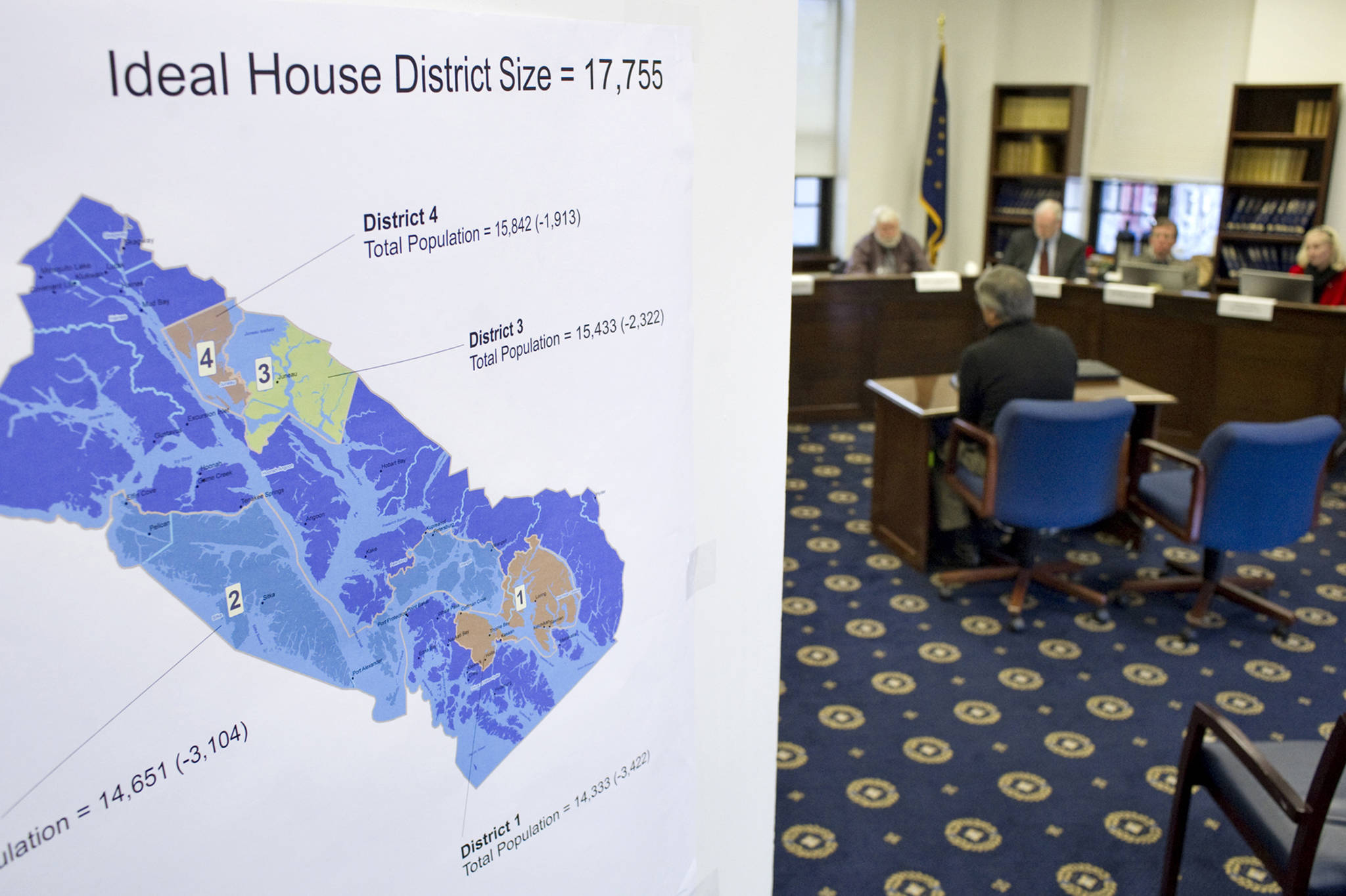A group of appointed officials began Wednesday what will be over a year’s worth of preparation for the state’s redistricting process, which takes place only once every 10 years.
The Redistricting Planning Committee had their first meeting today in Anchorage to begin the preparing a space for another group of appointees to do their work of redrawing Alaska’s legislative districts.
Officials began planning what the official redistricting board will need to do their job: office space, computers, software. But that planning soon ran up against the wall of bureaucracy as the planning committee began asking each other what the process actually was for securing these things.
Different state departments have different procurement offices with different procedures. The committee has a total budget of $400,000, with $350,000 coming from the Legislature and $50,000 from the governor’s office.
[‘It’s power and money’: Here’s why Alaska is set to spend on 2020 census]
Would the procurement procedure need to go through the Department of Administration or the Legislative Affairs Agency, committee members asked each other. Because no one could say, it was agreed that a representative from the Department of Law would be consulted. A procurement specialist would be called to a future meeting to walk committee members through the process.
The planning committee is made up of five appointees: two from the governor’s office, one appointed by each leader of the two houses of the Legislature and one appointed by the chief justice of the Alaska Supreme Court.
Gov. Mike Dunleavy appointed Jordan Shilling, a communications specialist in his office, and Bethany Marcum, executive director of the libertarian thinktank Alaska Policy Forum.
T.J. Presley was appointed by House Speaker Bryce Edgmon, I-Dillingham, and Jane Conway by Senate President Cathy Giessel, R-Anchorage. Presley and Conway work as aides for Edgmon and Giessel respectively.
Jill McLeod, an Anchorage attorney, was appointed by Alaska Supreme Court Chief Justice Joel Bolger.
Redistricting can only take place once the latest census has been completed and its information published. Data from the 2020 census won’t be made available until 2021, with all information being published as of March 31 of that year.
That process will redraw lines for the state’s legislative districts. Because Alaska only has one representative in the U.S. House of Representatives, the only district lines being redrawn will be for the state legislature.
The redistricting board would begin its work in the fall of 2021 but redistricting is a complicated process with data from the census and well as other information fed into software and used to remake Alaska’s political map.
[State seeks to end partisan gerrymandering nationwide]
What software to use, how many computers and what other resources will be needed have not yet been determined. The planning committee made a list of priorities it wanted to pursue before it’s next meeting on Dec. 18.
That mostly included bringing in consultants. Lawyers from DOL to ensure the committee was following proper procedure, procurement specialists and people who had been involved with the redistricting process a decade ago.
One of the things the committee were sure they would need was space for the board to work. It was agreed that Anchorage was the most likely location for the board to do their work. Committee members cited the cost of getting to and from Juneau, the other likely location, and the potential costs of relocating staff to the area for the duration of the process.
The planning committees next meeting will take place on Dec. 18 at 3 p.m. Meetings are open to the public and information to attend via teleconference can be found on the public notices section of the state website.
• Contact reporter Peter Segall at 523-2228 or psegall@juneauempire.com.

